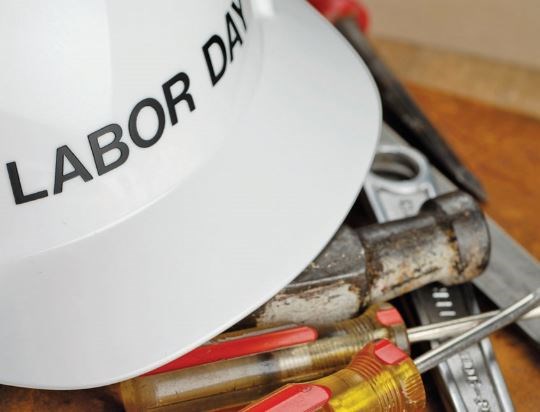As another B.C. summer swelters toward an end, school teachers, led by the B.C. Teachers’ Federation’s Jim Iker still don’t have a collective agreement, so a real possibility exists that public schools will not open Sept. 2. As a result, more British Columbians than usual may be thinking about labour unions and the meaning of Labour Day.
(Full disclosure: I was an active union member for several decades as a professional truck and bus driver, and view the trade union as one of the smartest social inventions of the past few centuries.)
The Canadian holiday originated in Toronto, where an 1872 printers’ march in favor of a shorter work day mobilized a full 10 per cent of the adult population, at a time when unions were still illegal in Canada. By 1894, Labour Day was a national holiday.
B.C. saw strikes against the Hudson Bay Company on Vancouver Island in the 1840s, and coal miners organizing strikes for better treatment at coal mines in the 1850s. The anarcho-syndicalists of the Industrial Workers of the World (The IWW) led strikes by railway workers in the Fraser Canyon in 1912, and B.C. Communists and other radicals organized 1935’s On to Ottawa Trek protesting Depression era austerity measures.
In 1983, B.C. unions played a leading role in a widespread fight against provincial austerity and anti-union legislation that saw tens of thousands of demonstrators filling the streets of Vancouver, the lawn of the provincial legislature and the stadium at the PNE.
And unions have continued to benefit organized workers. In the last decades of the 20th century, 36.5 per cent of B.C. workers belonged to unions (“union density”) compared with a national density of just under 34 per cent. Today, organized workers in Canada still enjoy the “union advantage” that sees their wages averaging close to $7 an hour better than unorganized workers, according to the B.C. Federation of Labour. Canadian union density, while down from 20th century highs, continues to be much higher than in the United States.
However, by 2012 and after more than a decade of business-friendly Liberal government in Victoria, plus the restructuring of the global economy made possible by international trade deals like the North American Free Trade Agreement, B.C.’s union density has dropped to 31 per cent.
The fall in union density is widely viewed as a crisis among organized workers.
The makeup and leadership of the labour movement in Canada and B.C. in 2014 is much more diverse than before. The current president of the Vancouver and District Labour Council is Joey Hartman, a woman who began her working life as a child-care worker. The Canadian Labour Congress’s new president, Hassan Yussuff, was born in Guyana and was the first person of colour ever elected to the national umbrella body’s executive.
These new leaders face many challenges if they are to successfully enact that resonant old union motto, “What we desire for ourselves, we desire for all” in a new century. One of the newest and most difficult challenges is finding a union response to global warming/climate change, an issue that continues to divide B.C. trade unionists.
Labour Day facts
The first unions in Canada were formed by dockworkers in Quebec, Saint John and Halifax during the War of 1812.
The Canadian Labour Congress is the umbrella organization for most Canadian unions, representing over three million workers who belong to union locals, provincial labour federations and regional labour councils.
Last year, according to government figures, nearly five million workers in Canada were covered by union contracts. These workers constitute 31.5 per cent of the national workforce.
The B.C. Federation of Labour is the province's umbrella labour organization, representing over half a million workers (31 per cent of the provincial workforce) organized into 1,100 locals.
The Vancouver District and Labour Council is the local body that brings together most Vancouver unions, representing over 60,000 members.
The BC Teachers' Federation represents more than 41,000 public school teachers. B.C. teachers won the right to strike 27 years ago. Since then the union has experienced 48 strikes and three lockouts under local bargaining from 1987 to 1994, and three strikes disrupting 14 days of school, three legislated contracts, one legislated "cooling off period" and two negotiated deals under "provincial bargaining" since 1994.
Quebec is Canada's most highly unionized province, with a union density of over 39 per cent of its workforce.
Unionized workers in Canada average nearly $7 an hour higher wages than unorganized workers.
Unifor is the country's largest private sector union with over 305,000 members.
The Canadian Union of Public Employees (CUPE) represents over 650,000 members across the country.
The B.C. Government and Service Employees Union (BCGEU) represents over 67,000 public and private sector members across the province.



